Evolutionary Ecology
The department of Evolutionary Ecology gathers complementary skills in behavioural ecology, population dynamics, population biology, community ecology, and methodology (statistics and modelling). The research done in the department aims at studying how animal species evolve in a changing world by understanding the causes of the evolution of traits, adaptations and interactions. For that, we consider different levels of organization from individuals to populations and communities. Because organisms cannot be considered isolated from other biotic factors, we consider pathogens but also competing species within communities.
We study how individuals adapt to their environments that are largely impacted by anthropic pressures, and how life history traits and behaviour evolve in response to these pressures. Although we mainly focus on phenotype, we more and more consider the mechanistic link between the genotype and the phenotype. We develop the theoretical framework of our discipline through a conceptual and modeling approach. In parallel, we test hypotheses that arise from theoretical predictions through experimental, comparative and observational approaches on different biological models (insects, birds, mammals). Experimental approaches are developed in the laboratory (insect model) and in natura (bird, insect and mammal models). Observational and comparative research is mainly concerned with vertebrates. Our approaches are also, and increasingly, interested in the mechanisms of adaptive responses. In addition to the classical approaches of demographic analysis and trait change, methods of ecophysiology, chemical ecology and molecular biology are used.
Our department hosts several long-term studies of wild populations of different species. These long-term studies offer a valuable way to understand how biotic and abiotic factors affect individuals’ life history traits, and the functioning of populations in natura. Five populations of mammalian species are thus monitored for several years (more than 40 years on roe deer, 30 on Alpine marmots, 25 years on cats, 16 years on zebras, and 20 years on impala). Two of our study sites (La Sassière in Vanoise National Park (Alpine marmots) and Hwange National Park) have been certified as “Site d’Etude en Ecologie Globale” (SEEG), and two (ZA “Hwange” and ZA “Antarctic and sub-Antarctic”) were certified as “Zone Atelier” by the CNRS.
The department of Evolutionary ecology is also largely involved in training activities. Lastly, we also have strong socio-economic relationships. Indeed, because we address questions of major societal interest (global warming, public health) we tightly collaborate with socio-economic partners (Office Français de la Biodiversité, Vanoise National Park, Hwange National Park in Zimbabwe, Office National des Forêts, etc.) and participate to general public and media events.
Publications
Display of 481 to 510 publications on 2449 in total
Young and mature males have similar energy expenditure during the rut in a trophy-hunted population of Mediterranean mouflon
Mammalian Biology: Zeitschrift für Säugetierkunde . 101 ( 1 ) : 35 - 42
Journal article
see the publicationTargeted strategies for the management of wildlife diseases: the case of brucellosis in Alpine ibex
Veterinary Research . 52
Journal article
see the publicationEnforced monoandry over generations induces a reduction of female investment into reproduction in a promiscuous bird
Evolutionary Applications .
DOI: 10.1111/eva.13311
Journal article
see the publicationReappraisal of the latest Albian (Mortoniceras fallax Zone) cephalopod fauna from the classical Salazac locality (Gard, southeastern France).
Geobios . 64 : 1-46
Journal article
see the publicationMobilisation de la FRB par les pouvoirs publics français sur les liens entre Covid-19 et biodiversité
: 63 pages
Report
see the publicationThe Link Between Covid-19 and Biodiversity: A Report Commissioned by the French Public Authorities
: 60
Report
see the publicationReproductive females and young mouflon ( Ovis gmelini musimon × Ovis sp.) in poor body condition are the main spreaders of gastrointestinal parasites
Parasitology . 148 ( 7 ) : 809-818
Journal article
see the publicationFemale Seals that Breed Young Also Enjoy a Slower Rate of Aging
Bulletin of the Ecological Society of America . 102
DOI: 10.1002/bes2.1863
Journal article
see the publicationParasitized, non-parasitized, why? A study of factors influencing tick burden in roe deer neonates
EvoLyon .
Poster
see the publicationDeterminants of genetic diversity and species richness of North American amphibians
Journal of Biogeography . 49 ( 11 ) : 2005-2015
Journal article
see the publicationGeneric Solving of One-compartment Toxicokinetic Models
Journal of Exploratory Research in Pharmacology .
Journal article
see the publication3D models related to the publication: Wild versus lab house mice: Effects of age, diet, and genetics on molar geometry and topography.
MorphoMuseum . 7 ( 3 ) : e141
Journal article
see the publicationMorphometric variance, evolutionary constraints and their change through time in Late Devonian Palmatolepis conodonts
Evolution - International Journal of Organic Evolution . 75 ( 11 ) : 2911-2929
DOI: 10.1111/evo.14330
Journal article
see the publicationAvis de l'Anses relatif à l’évaluation de l’efficacité de différents scénarios de lutte contre la brucellose dans les populations des bouquetins dans le massif du Bargy
: 39 p.
Report
see the publicationCounter‐gradient variation of reproductive effort in a widely distributed temperate oak Quercus petraea
Functional Ecology . : 1-11
Journal article
see the publicationWater Quality Shapes Freshwater Macroinvertebrate Communities in Northern Tunisia
Recent Advances in Environmental Science from the Euro-Mediterranean and Surrounding Regions (2nd Edition) . : 1915-1919
Book chapter
see the publicationInferring livestock movement networks from archived data to support infectious disease control in developing countries
Preprint
see the publicationEfficient use of demographic data: Integrated Population Models
Demographic Methods across the Tree of Life . 9780198838609
Book chapter
see the publicationLongitudinal demographic data collection
Demographic Methods across the Tree of Life .
Book chapter
see the publicationKeeping modelling notebooks with TRACE: Good for you and good for environmental research and management support
Environmental Modelling & Software . 136 : 104932
Journal article
see the publicationWithin-host genetic micro-diversity of Mycobacterium tuberculosis and the link with tuberculosis disease features
Preprint
see the publicationHow does interspecific competition modify the response of grass plants against herbicide treatment? A hierarchical concentration-response approach
Science of the Total Environment . 778 : 146108
Journal article
see the publicationEvaluation using latent class models of the diagnostic performances of three ELISA tests commercialized for the serological diagnosis of Coxiella burnetii infection in domestic ruminants
Gemeinsamen Arbeitstagung der Nationalen Referenzlabore Chlamydiose, Q-Fieber, Paratuberkulose und Tuberkulose der Rinder - Online-Tagung veranstaltet . : 17 slides
Conference paper
see the publicationEvaluation using latent class models of the diagnostic performances of three ELISA tests commercialized for the serological diagnosis of Coxiella burnetii infection in domestic ruminants
Veterinary Research . 52 ( 1 )
Journal article
see the publicationPhenotypic and Transcriptomic Responses to Stress Differ According to Population Geography in an Invasive Species
Genome Biology and Evolution . 13 ( 9 ) : evab208
DOI: 10.1093/gbe/evab208
Journal article
see the publicationDetection and monitoring of Drosophila suzukii in raspberry and cherry orchards with volatile organic compounds in the USA and Europe
Scientific Reports . 11 ( 1 )
Journal article
see the publicationDealing with host and food searching in a diurnal parasitoid: consequences of light at night at intra‐ and trans‐generational levels
Insect conservation and diversity . 14 ( 2 ) : 235-246
DOI: 10.1111/icad.12477
Journal article
see the publicationHow much energetic trade‐offs limit selection? Insights from livestock and related laboratory model species
Evolutionary Applications . 14 ( 12 ) : 2726-2749
DOI: 10.1111/eva.13320
Journal article
see the publication
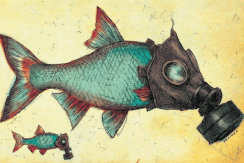
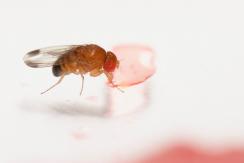
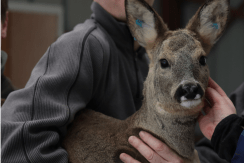
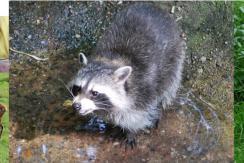
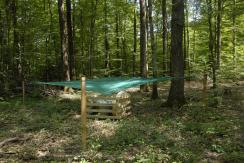
You also, comment on this article